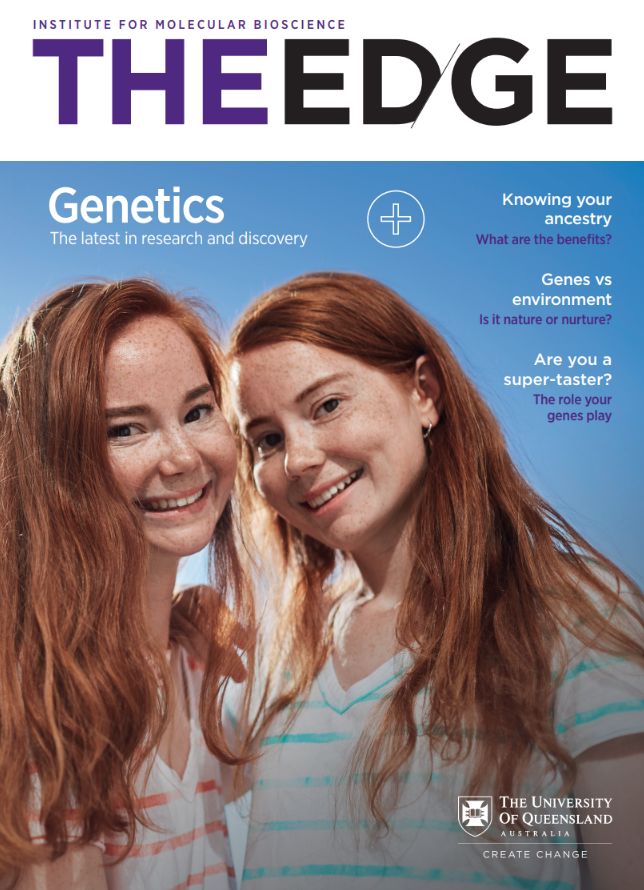Get the latest research to your inbox
- 9 Oct 2024If you missed the recent runway dinner at the Queensland Museum, don't worry! The five exquisite garments inspired by IMB research will be showcased at the Brisbane Fashion Month West Village Runway this October.
Fairlie Group
Group Leader
Professor David Fairlie
Director, Centre for Drug DiscoveryNHMRC Leadership Fellow and Group Leader & Centre Director of Institute for Molecular BioscienceInstitute for Molecular BioscienceResearcher profile is public:1Supervisor:Researcher biography:Professor Fairlie is an NHMRC Research Investigator Fellow (Level 3) (2022-present), a Node Leader of the ARC Centre of Excellence for Innovations in Peptide Protein Science, one of four Centre Directors and former Head of the Division of Chemistry of Structural Biology at the Institute for Molecular Bioscience (since 2009), and an Affiliate Professor of the School of Chemistry and Molecular Biosciences. He was previously an NHMRC Senior Principal Research Fellow (2012-2021), a Node Leader at the ARC Centre of Excellence in Advanced Molecular Imaging (2014-2021), an ARC Federation Fellow (2006-2011), an ARC Professorial Fellow (2002-2006), and Scientific Director and Chief Scientific Officer of a startup company. He undertook postdoctoral studies at Stanford University and University of Toronto, postgraduate studies at Australian National University and University of New South Wales, and undergraduate studies at University of Adelaide.
His research group works across the disciplines of chemistry (synthesis, structure, reaction mechanisms), biochemistry (enzyme inhibitors, protein-protein interactions, GPCRs, transcription factors), immunology (innate immune cells in health and disease, mucosal T cells), and pharmacology (molecular pharmacology and human cell signalling, experimental pharmacology in rodent models of human diseases). He has published over 480 scientific journal articles in high impact chemistry journals (e.g. Chem Rev, Acc Chem Res, J Am Chem Soc, Angew Chem Int Edit, Chem Sci, J Med Chem, Org Lett, J Org Chem) and biology journals (e.g. Nature, Science, Nat Rev Endocrinol, Mol Cancer, Immunity, Nature Immunology, Science Immunology, Am J Resp Crit Care Med, J Hepatol, Trends Immunol, Mol Neurodegen, Adv Drug Deliv Rev, Nature Communications, Trends Pharmacol Sci, J Exp Med, J Clin Invest, Kidney Int, Arthritis & Rheum, Science Advances, Pharmacol Ther, Cancer Res, Proc Natl Acad Sci USA, Dev Cell, Curr Biol, J Cell Biol, Cell Reports, PloS Biol, Br J Pharmacol, JCI Insight, Diabetes, Mucosal Immunol, etc). He has been a Highly Cited Researcher (Clarivate Analytics), with over 37,000 citations and 113 publications with over 100 citations (Google Scholar), and has collaborated with many of the world's largest pharmaceutical and biotechnology companies.
Body:Highlights
Professor David Fairlie is internationally known for his research contributions in the fields of medicinal chemistry, organic chemistry, biological chemistry and in several disciplines in biology (pharmacology, virology, immunology, neurobiology, biochemistry). He has had strong research programs in chemistry, biochemistry and pharmacology continuously funded by the Australian Research Council (ARC) since 1991 and the National Health and Medical Research Council (NHMRC) since 1995. He was awarded prestigious fellowships from the ARC, in the form of an Australian Professorial Fellowship (2002-2006) and an Australian Federation Fellowship (2006-2011), and from the NHMRC, in the form of a Senior Principal Research Fellowship (2012-2016 and 2017-2021). He has held numerous research grants in chemistry, biochemistry, pharmacology, virology, immunology, parasitology, neurobiology and oncology; including 15 multimillion dollar grants from industry and governments. He has served on academic and industry advisory panels, company boards, and research grant panels both in Australia and overseas. He collaborates with some of the world's largest pharmaceutical companies.
Professor Fairlie has >300 publications (h index >60; >14,000 citations; >35 cites per article; >30 articles >100 citations) and presents 5-10 invited plenary and keynote lectures around the world each year. He is also well known in the international pharmaceutical arena, having consulted to multiple big pharma on protease inhibitors, GPCR modulators, protein and peptide mimics, drug design and discovery, and pharmacology. He has been involved in four startup companies in Australia and the USA.
Connect



Researchers
Dr James Lim
Senior Postdoctoral FellowThe Institute for Molecular BioscienceResearcher profile is public:1Supervisor:Dr Eunice Poon
Postdoctoral Research FellowInstitute for Molecular BioscienceResearcher profile is public:1Supervisor:Dr Robert Reid
Senior Postdoctoral FellowThe Institute for Molecular BioscienceResearcher profile is public:0Supervisor:Dr Martin Stoermer
Adjunct Research FellowThe Institute for Molecular BioscienceAdjunct Senior Research FellowInstitute for Molecular BioscienceResearcher profile is public:1Supervisor:Researcher biography:I am a medicinal and organic chemist
Studied organic chemistry at the University of Sydney, moved to UQ in 1993, then worked for Bayer in Germany, before moving back to Australia in 1996. Worked in Melbourne at the Victorian College of Pharmacy (now MIPS). I then returned to UQ in 2000 to the Fairlie lab where we design and synthesise new chemical entities to tackle human disease. Since 2012 I have been on extended medical leave and am currently an Adjunct Research Fellow, researching proteins from flaviviruses such as Dengue, West Nile, and Zika viruses, and the coronaviruses SARS, MERS, and SARS-CoV-2.
Students
Miss Damica Laurie
PhD studentThe Institute for Molecular BioscienceResearcher profile is public:0Supervisor:Miss Himani Deepak Shah
PhD studentThe Institute for Molecular BioscienceResearcher profile is public:0Supervisor:Rachel Pengelly
PhD studentThe Institute for Molecular BioscienceResearcher profile is public:1Supervisor:Mr Nghia Chi Luong
PhD studentThe Institute for Molecular BioscienceResearcher profile is public:0Supervisor:Mr Ryan Jude Duran Rivero
PhD studentThe Institute for Molecular BioscienceResearcher profile is public:0Supervisor:Mr Xun Li
PhD studentThe Institute for Molecular BioscienceResearcher profile is public:0Supervisor:Miss Sherry Peng
PhD studentThe Institute for Molecular BioscienceResearcher profile is public:0Supervisor:Mr Youzhi Wu
PhD studentThe Institute for Molecular BioscienceResearcher profile is public:0Supervisor:Ms Lei Luo
PhD studentThe Institute for Molecular BioscienceResearcher profile is public:0Supervisor:Miss Ridhima Raina
Visiting Masters studentThe Institute for Molecular BioscienceResearcher profile is public:0Supervisor:Chandri Pradeep
Masters studentThe Institute for Molecular BioscienceResearcher profile is public:1Supervisor:Mr Tarran Roles
PhD studentThe Institute for Molecular BioscienceResearcher profile is public:0Supervisor:Jenna Chen
Masters studentThe Institute for Molecular BioscienceResearcher profile is public:1Supervisor:Emily Keogh
Masters studentThe Institute for Molecular BioscienceResearcher profile is public:1Supervisor:Hariz Khamis
Honours studentThe Institute for Molecular BioscienceResearcher profile is public:1Supervisor:Support staff
- Honorary FellowInstitute for Molecular Bioscience
- Research AssistantInstitute for Molecular Bioscience
- Casual BioinformaticianInstitute for Molecular Bioscience
- Higher degree by research (PhD) studentInstitute for Molecular Bioscience
Pages
Strawberry DNA extraction activity
Extract and view DNA from a strawberry using common household ingredients.
Get started
The Edge: Genetics
People have known for thousands of years that parents pass traits to their children, but it is only relatively recently that our technology has caught up to our curiosity, enabling us to delve into the mystery of how this inheritance occurs, and the implications for predicting, preventing and treating disease.
Subscribe to our newsletter
Get the latest research straight to your inbox.
Stay up-to-date as we answer questions about hot topics, and share the latest news at IMB, Australia’s #1 research institute.
General enquiries
+61 7 3346 2222
imb@imb.uq.edu.au
Media enquiries
IMB fully supports UQ's Reconciliation Action Plan and is implementing actions within our institute.
Support us
Donate to research
100% of donations go to the cause



